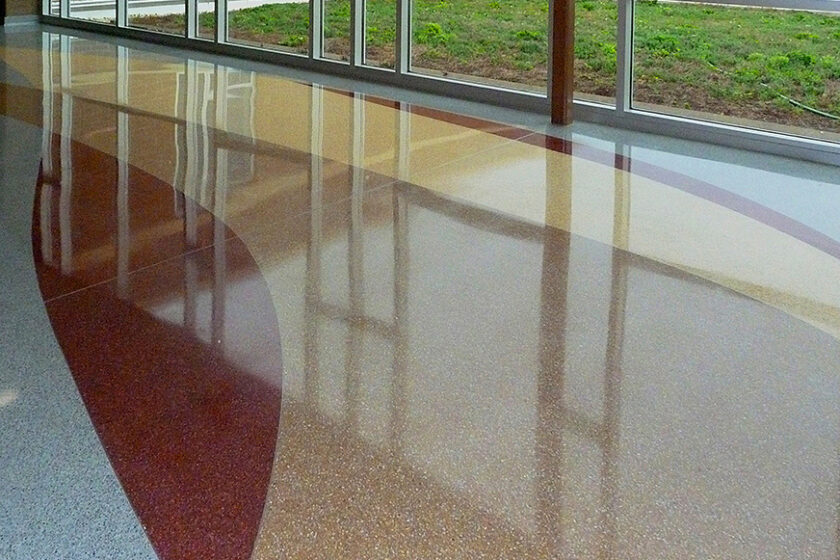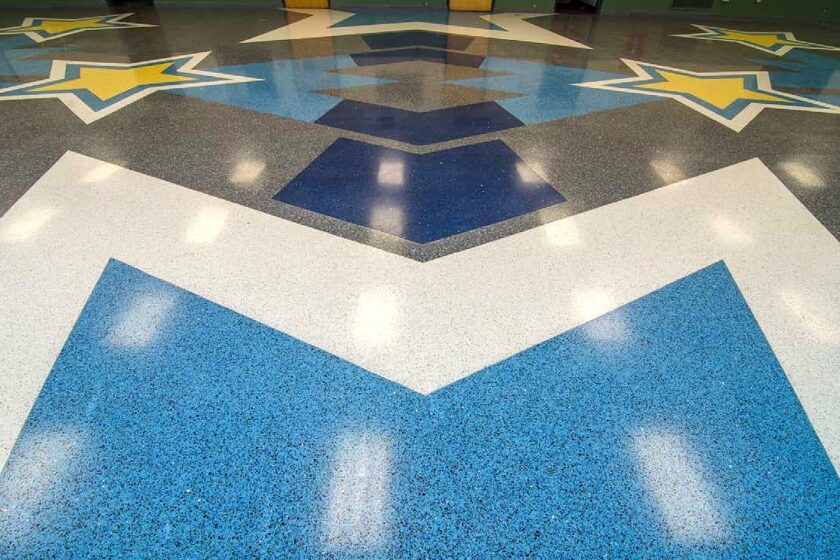3 Questions to Consider Before Getting Started
From the National Terrazzo & Mosaic Association
From a construction technique first developed in ancient times, terrazzo has come a long way, and continues to evolve as a practical solution for flooring and more. Terrazzo never goes out of style, for a great many reasons.
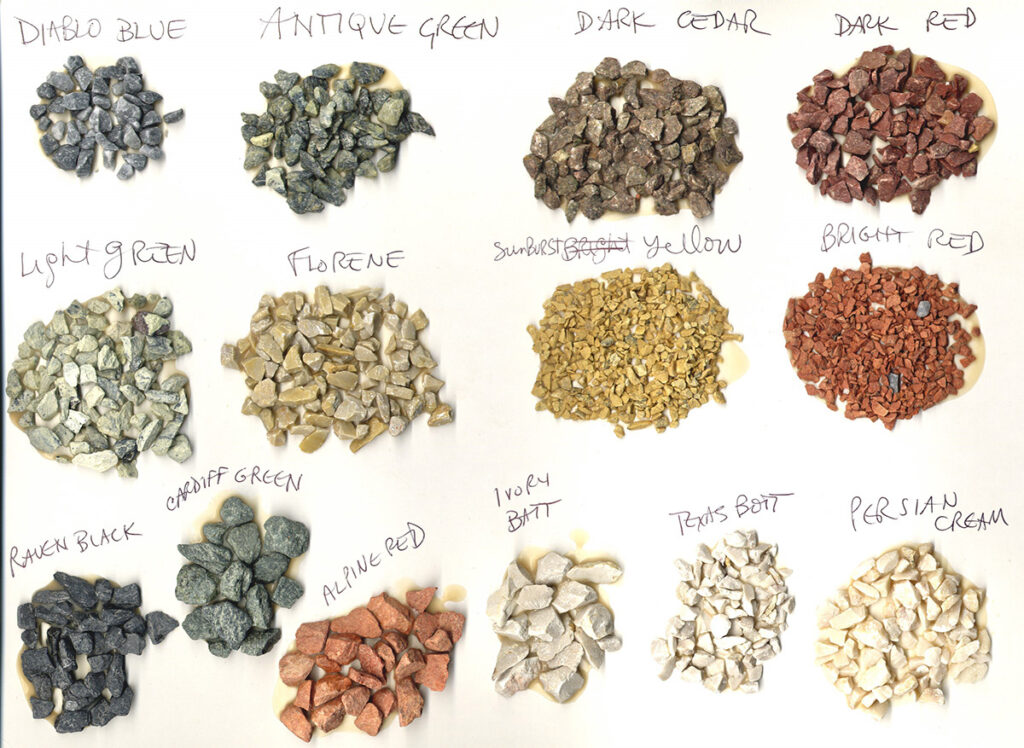
Aggregate selection
Architects and designers thinking of including terrazzo in a project can be assured it comes with a long list of valuable assets: a seamless, impermeable floor, easy to maintain, durable, and environmentally friendly. In addition, its design versatility is matchless. Terrazzo’s various systems offer many flexible options today to respond to the conditions and demands of any project, whether new construction or renovation.
Specifying terrazzo does come with a bit of a learning curve, but you’re not alone to reinvent the process or get stuck guessing about the right choices for your job. The National Terrazzo & Mosaic Association provides expert third-party guidance and consulting at every stage of the project at no charge to all parties on a terrazzo project team. Give us a call!
“Many architects have never worked with terrazzo and have no idea how to get started,” said NTMA Technical Director Gary French. He offers here some guiding questions to help an architect take the first steps of thinking through the many options.
The first step will be to identify which terrazzo system best meets your needs on your particular project. Terrazzo comes in a range of systems—from epoxy to traditional sand-cushion cement terrazzo and several thinner cement systems.
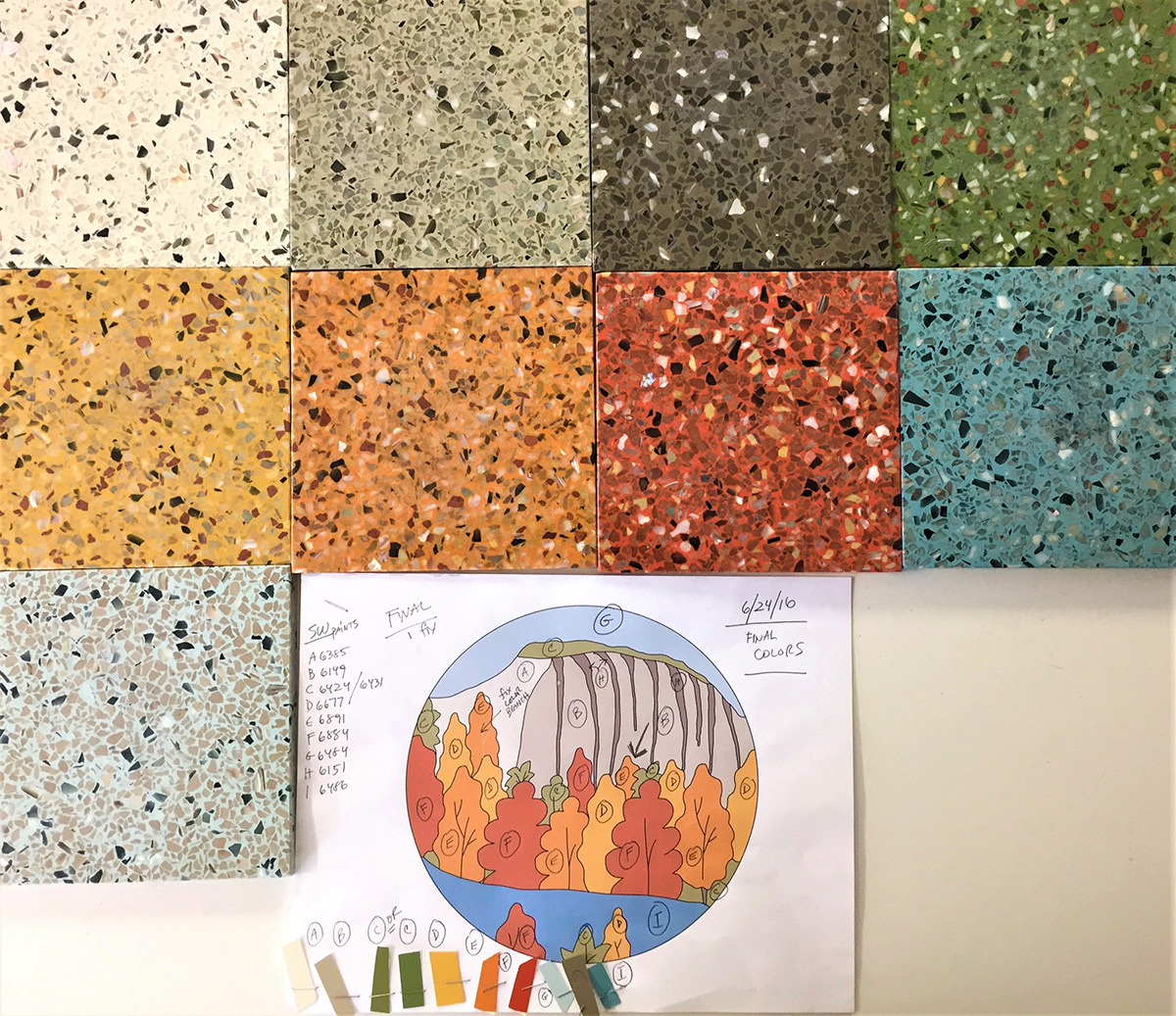
Terrazzo swatches
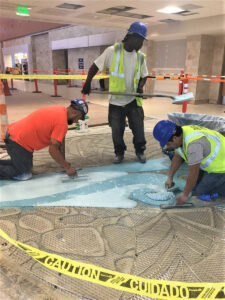
Terrazzo installation
1. Exterior or Interior?
Whether the application is planned for indoors or out is the first step in eliminating some options. Only certain cement-based systems are appropriate for exterior application.
For most interior terrazzo installations, epoxy is often the floor of choice. It’s a flexible solution to many challenges, especially for renovations. It can be installed on a flat concrete slab or a variety of other substrates, including plywood, tile, or an existing terrazzo installation.
2. Thick or Thin?
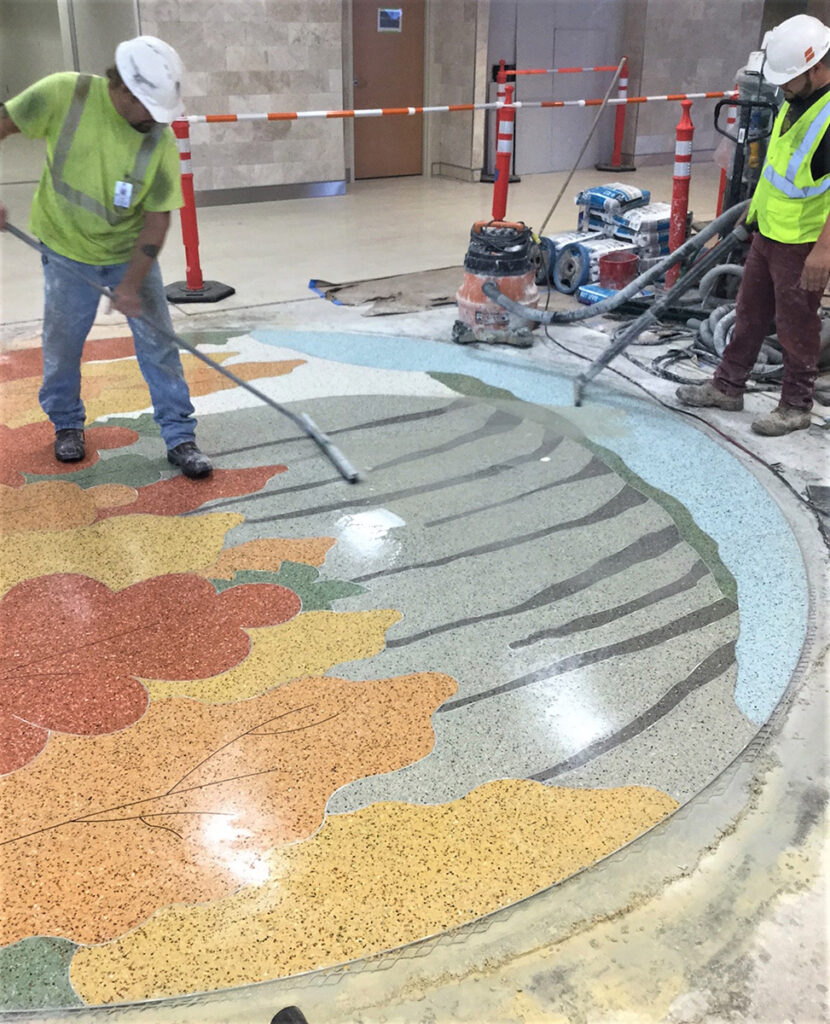
Terrazzo installation
For interior applications in new construction, the thicker sand-cushion system can be a great and reliable option, but for a renovation, the allowable thickness generally eliminates that possibility. Epoxy offers the advantage of being the thinnest terrazzo system; it’s a nominal 1/4″ or 3/8″ thick resin matrix veneer. It’s lightweight—just 3-4 lbs. per square foot—and flexible, making it ideal for multi-story use. Epoxy also has the quickest drying time of all systems.
For exterior applications, cement based terrazzo is the product of choice. The Rustic system is finished with a non-ground, textured surface for exterior use. It is used with Bonded and Monolithic terrazzo. The half-inch Monolithic terrazzo is the most economical system of all, with the advantages of faster installation without compromising on looks, ease of maintenance, or performance. The cement matrix veneer depends on the quality of the concrete for a flat, crack-free finish.
Polyacrylate and Monolithic systems are thinner and lighter-weight cement options. Polyacrylate is a 3/8″ polymer-modified cement matrix veneer poured on a flat concrete slab, the polymer providing the strength to allow for thinner applications. The NTMA can help you consider the various options and clarify any questions.
3. Special Considerations
• What kind of loads will the floor have to handle? Epoxy terrazzo offers tensile and compressive strengths not found in cement-based systems. When used in conjunction with a flexible membrane as a specified extra, an epoxy floor can also absorb some horizontal concrete crack or control joint movement.
• What if any chemical resistance is needed, such as for labs or restrooms? Epoxy is not only the most resilient and chemical-resistant of the systems, but it also comes with the lowest maintenance cost due to its impermeability. Areas where germs are an issue can also be installed with minimal dividers for maximum seamlessness.
Moving Ahead
Now that your project has been narrowed to either epoxy or one of the cement systems, the NTMA and your NTMA contractor can work with you to pinpoint what options make the most sense for your projects’ size, timeline, and budget.
Your first step will be creating a pattern for the floor. Your NTMA contractor is experienced in efficiently and successfully transferring patterns, intricate or simple, large or small, to the floor, and you can count on their team’s expertise.
Epoxy terrazzo is particularly well-suited for multicolored patterns and designs.
It can be specified with glass, synthetic, or granite aggregates rather than the traditional marble to provide brilliant colors or chemical resistance.
The choice is yours, from a classic monochromatic floor to a multicolored art floor. The custom color choices are unlimited. One recent NTMA Honor Award-winning installation at Orlando International Airport comprises 68 epoxy colors. Check out some of the NTMA’s other past winners for an idea of the range of aesthetics possible. Complexity of design and number of colors will impact the cost, as does the choice of aggregates.
Next, you’ll choose your colors, starting with your matrix colors. The final appearance of a given terrazzo mix results from the choice of matrix colors and the size and type of aggregate.
You’ll want to be sure and download the proper spec from NTMA website. Then you’ll work with your local NTMA contractor on final details such as scheduling and value engineering.
All along the way, the NTMA is available to clarify and offer guidance. Our goal is a successfully designed and executed final product that will deliver top results and satisfaction for all parties. Call us at 800.323.9736 or email Tech-Info@ntma.com.
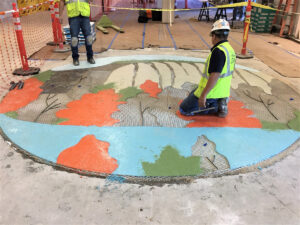
Terrazzo installation
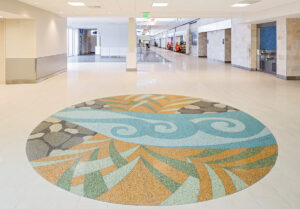
Terrazzo design
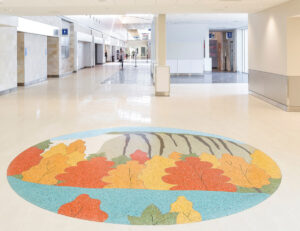
The Art of the Process
Artist Joan Weissman is adept at designing spectacular terrazzo images. Ms. Weissman was commissioned to create two 15’ diameter terrazzo circles at the Greenville Spartanburg International Airport. The circles represent iconic landscape imagery from the surrounding area. The terrazzo is placed in public corridors creating an artistic focal point, a sense of the locality, and an engaging, identifiable meeting place. The first piece, River Bank, is an abstract approach to the waterways and local plant life, while the second piece, Autumn at Table Rock, depicts a monumental feature of a nearby state park. NTMA contractor member, the David Allen Company of Raleigh, NC installed the terrazzo art.





